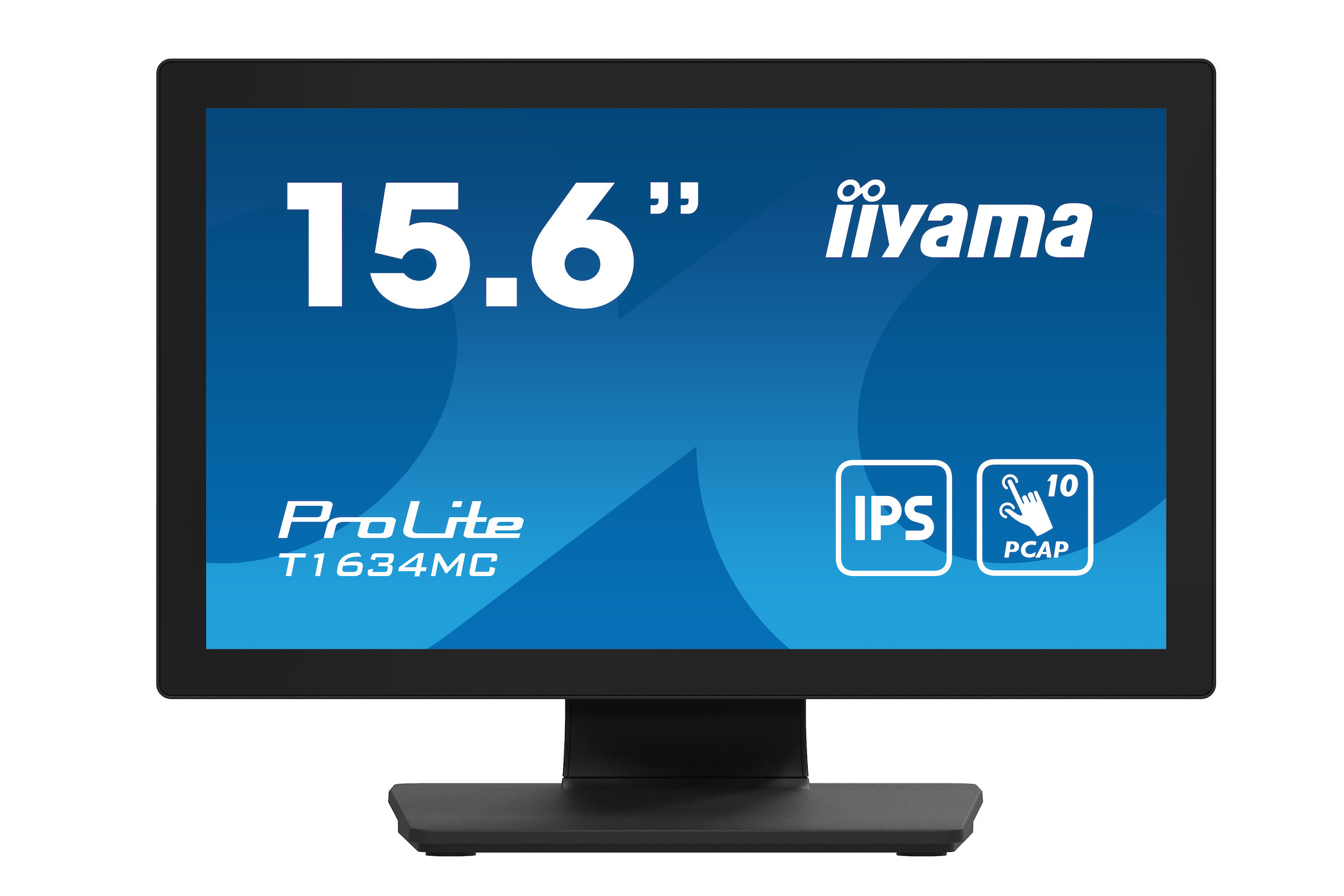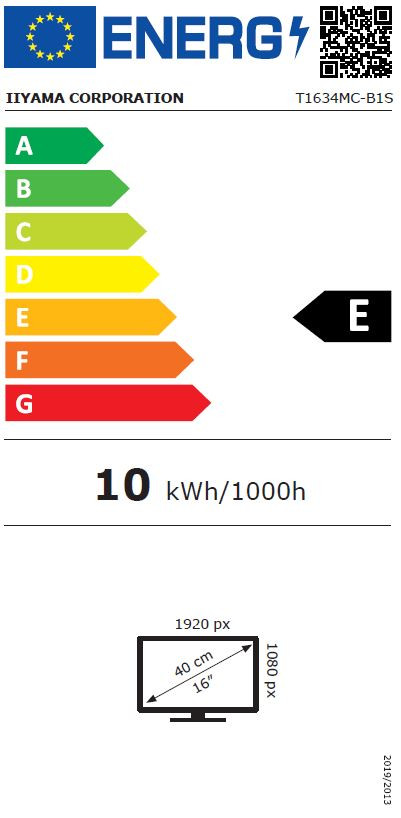



































£454.30*
- Resolution 1920 x 1080 Full HD
- Diagonal 16"
- Panel type IPS
- Refresh Rate 60Hz



Product information
The ProLite T1634MC-B1S with Full HD (1920x1080) resolution and IPS panel technology is based on P-Cap 10-point touch technology, which guarantees high durability, scratch resistance and perfect image performance thanks to a glass overlay that covers the screen from edge to edge. Even if the glass is scratched, the touch function remains unaffected. The flexible stand can be positioned at different angles to create a comfortable and ergonomic user experience, and the integrated cable management system hides all cables and electrical wires, creating a clean and cable-free workspace. The screen is IP65 certified, which means it is dust and waterproof from the front. A perfect solution for demanding environments. Thanks to the touch-through-glass technology, a seamless and precise touch response is possible even with a separate layer of glass on the screen.
TOUCH THROUGH GLASS
This touchscreen display with touch-through-glass function transforms conventional glass surfaces into interactive touchscreens. Perfect for interactive shop windows, POS or in restaurants as a digital menu.
FULL HD
With a resolution of 1920×1080p, high-resolution images are displayed. The high-quality panel offers a multiple of the displayable area compared to a standard LCD. For example, 60% more image content compared to an LCD with a resolution of 1280×1024p.
TOUCH TECHNOLOGY - CAPACITY
This technology uses a sensor network of microfine wires integrated into the glass surface. Touching the glass changes the electrical signals, allowing the touch position to be calculated and transmitted to the controller. The glass surface of this technology is extremely durable and the touch functionality remains unaffected, even if the glass is scratched. It offers perfect image reproduction and can be operated with fingers (even with latex gloves) or magnetic pens.
IP65
The IP code certification indicates how resistant the screen is under extreme conditions. IP65 means that the monitor is dustproof and protected against water jets.
Technical data
| Name | iiyama T1634MC-B1S 16" IPS Monitor, 60Hz, 25ms |
|---|---|
| Article number | 1000031347 |
| GTIN/EAN | 4948570122110 |
| Manufacturer SKU | T1634MC-B1S |
| EPREL ID | 1530736 |
| Model name | T1634MC-B1S |
| Brand | iiyama |
| Product Type | Monitor |
| Product Series | iiyama T Series |
| Technology | LCD |
| Panel type | IPS |
| backlight | LED |
| Resolution | 1920 x 1080 Full HD |
| Diagonal | 16" |
| Aspect Ratio | 16:9 |
| Contrast Ratio | 700 :1 |
| Screen finish | Matt |
| Max. Brightness | 450 cd/m² |
| Response time | 25ms |
| Refresh Rate | 60Hz |
| Support - VESA | 100 x 100 |
| Inputs | 1x Displayport , 1x HDMI , 1x VGA |
| Features | Touch screen , tiltable |
| Product width | 38.1 cm |
| Product height | 28.55 cm |
| Product depth | 20 cm |
| Weight | 3.4 kg |
| Colour | Black |
| EEK Spectrum | A to G |
| Energy efficency class | E |
| Condition | New |
| Warranty | 24 Month |
| Warranty type | Bringin service Service and support information |
Product safety
| Person responsible for the EU |
|---|
| iiyama International Corporate |
| Wijkermeerstraat 8 |
| 2131 HA Hoofddorp |
| Netherlands |
| info.de@iiyama.com |



